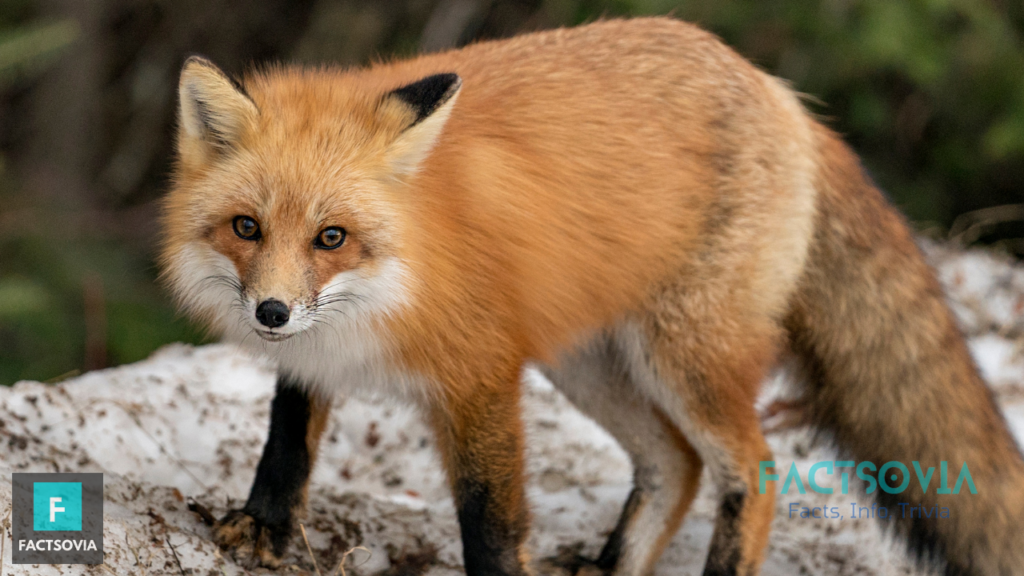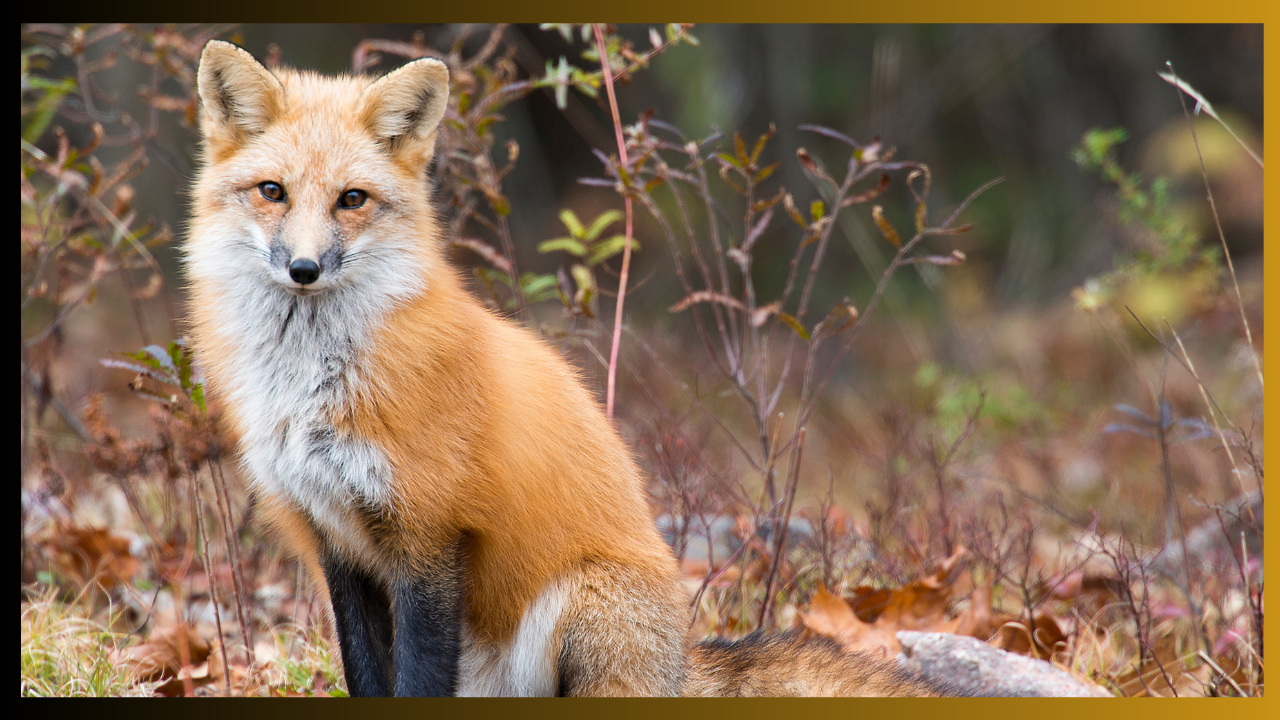We use affiliate links to run our site. When you buy through links on our site, we may earn an affiliate commission, without any added cost to you. Learn more
Foxes are one of the most fascinating animals in the world, known for their intelligence, adaptability, and cunning. They are part of the Canidae family, which also includes wolves, coyotes, and dogs.
There are about 37 species of foxes worldwide, each with its unique habitat preferences and survival factors.
In this article, we will explore where foxes live, what kind of habitats they prefer, and the challenges they face in their respective habitats.
Different Species of Foxes:
There are various fox species worldwide, but the most common ones are the red fox, gray fox, Arctic fox, and fennec fox.
Red Fox
The red fox is the largest of the true foxes and has a distinctive reddish-orange coat with a white underbelly. They have black legs, ears, and the tip of their tail.
Their fur is thick and soft, allowing them to survive in cold climates. Red foxes have a pointed snout and triangular ears, which can rotate to help them locate prey.
They weigh between 6 and 15 pounds and can grow up to 30 inches in length.
Gray Fox
The gray fox has a grayish-brown coat with a black stripe running down its back and a white underbelly. They have reddish-brown fur on their neck and legs, and a distinctive black patch on the tip of their tail.
Gray foxes have slender bodies and short legs, allowing them to climb trees and escape predators. They have a pointed snout and large, upright ears.
Gray foxes weigh between 7 and 13 pounds and can grow up to 30 inches in length.
Arctic Fox
The Arctic fox has a thick white coat that helps it blend into its snowy habitat during the winter months. In the summer, their coat turns brown or grayish-brown. Arctic foxes have short ears and legs, and a rounded body shape.
They also have a short snout and a fluffy tail, which they can wrap around their body to keep warm. Arctic foxes weigh between 6 and 10 pounds and can grow up to 25 inches in length.
Fennec Fox
The fennec fox is the smallest of the fox species and has a sandy-colored coat that helps it blend into the desert habitat. They have large ears that help them dissipate heat and locate prey and a short snout.
Fennec foxes have short legs and slender bodies, which allows them to move quickly in the desert. They weigh between 1.5 and 3.5 pounds and can grow up to 16 inches in length.
Geographical Range
Foxes can be found on almost every continent, except for Antarctica.
The red fox has the broadest geographical range, with a presence in almost every part of the world, from the Arctic to the tropics.
Gray foxes are found in the Americas, ranging from southern Canada to northern South America.
Arctic foxes live in the circumpolar regions of the Arctic and sub-Arctic, while fennec foxes are only found in North Africa and the Middle East.

Habitat Preferences
Different fox species have different habitat preferences, ranging from arctic tundras to hot deserts and forests.
The red fox is a versatile species that can adapt to a wide range of habitats, from rural farmland to urban areas. They prefer open grasslands, mixed woodlands, and farmland, where they can hunt small mammals, birds, and reptiles.
Gray foxes are more arboreal and prefer woodland habitats, where they can climb trees to escape predators.
Arctic foxes are well-adapted to their cold, harsh environment and prefer coastal areas, tundras, and mountains.
Fennec foxes, on the other hand, prefer hot and arid desert regions and have specialized adaptations for survival in these areas.
Factors Affecting Survival
Foxes face various challenges in their respective habitats, ranging from predation to human encroachment and climate change.
Predation is a significant threat to foxes, with larger predators such as wolves, coyotes, and eagles posing a threat to their survival.
Human encroachment, such as habitat destruction, pollution, and hunting, is also a significant factor affecting fox populations worldwide.
Climate change is also affecting the habitats of some fox species, with Arctic foxes facing challenges due to melting sea ice and changing weather patterns.
Threats to the Populations
Fox populations worldwide face various threats that can affect their survival. For example, in the UK, fox hunting is a controversial issue that has led to a decline in fox populations.
In North America, foxes face challenges from habitat destruction and fragmentation, urbanization, and hunting.
In some parts of the world, foxes are also hunted for their fur and meat, posing a significant threat to their populations.
Adaptations
Foxes have various adaptations that help them survive in their respective habitats.
For example, the Arctic fox has thick fur and a bushy tail that helps them survive in cold, harsh environments. Red foxes have excellent eyesight and hearing, which helps them hunt small mammals and birds.
Gray foxes have the ability to climb trees, which allows them to escape predators and find food. Fennec foxes have large ears that help them dissipate heat and locate prey in the desert.
Interaction with Humans
Foxes have a complex relationship with humans, ranging from being viewed as pests to being admired for their beauty and intelligence.
In some parts of the world, foxes are hunted for sport or as pests, while in other areas, they are protected and even considered sacred.
In urban areas, foxes have adapted well to human presence and have been known to scavenge food from trash cans and pet food left outside.
In Popular Culture
Foxes have been an important part of human culture for centuries, appearing in folklore, myths, and art. In many cultures, foxes are seen as cunning and intelligent animals, known for their trickery and adaptability.
In Western cultures, foxes are often associated with the color red and are seen as symbols of passion and vitality.
Conclusion
Foxes are fascinating animals that have adapted well to a wide range of habitats worldwide. They face various challenges, including predation, habitat destruction, and climate change, but their intelligence and adaptability have helped them survive in changing environments.
Understanding where foxes live and their habitat preferences are essential for conserving these animals and ensuring their survival for generations to come.
FAQs
Do all fox species live in the wild?
Yes, all fox species live in the wild and are not domesticated animals.
Can foxes live in urban areas?
Yes, foxes have adapted well to urban areas and can be found in cities worldwide.
What kind of habitat do red foxes prefer?
Red foxes prefer open grasslands, mixed woodlands, and farmland where they can hunt small mammals, birds, and reptiles.
What are some threats to fox populations worldwide?
Fox populations face threats such as predation, habitat destruction, climate change, and hunting.
Why are foxes hunted in some parts of the world?
Foxes are hunted for their fur and meat in some parts of the world, while in other areas, they are viewed as pests or hunted for sport.
Amazon and the Amazon logo are trademarks of Amazon.com, Inc, or its affiliates.
